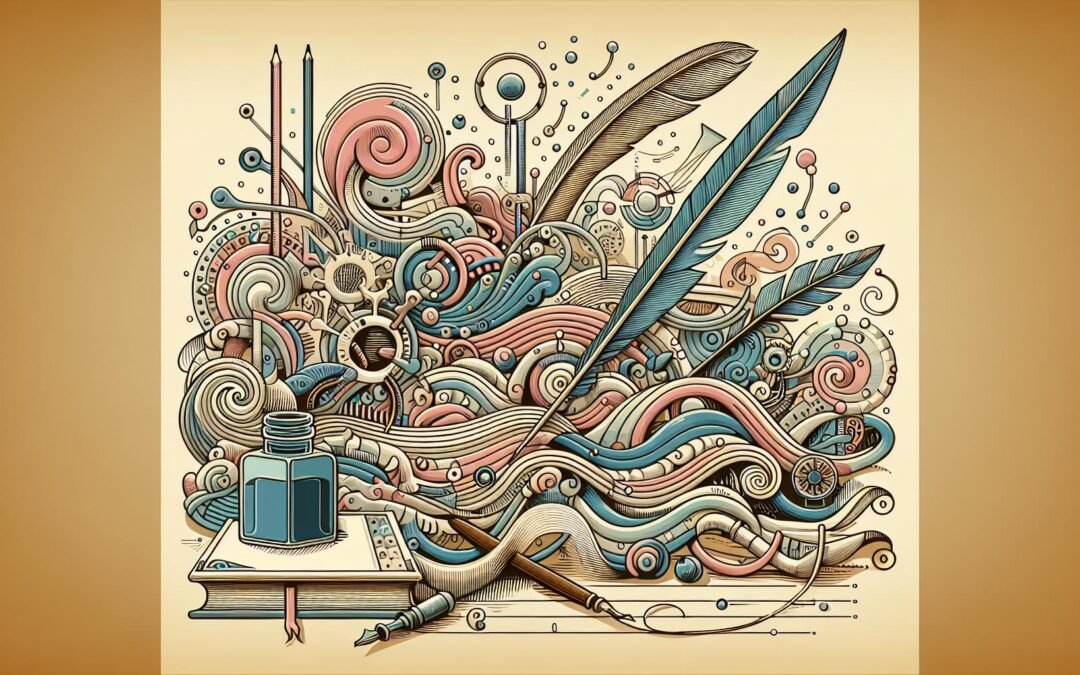Rhyme in poetry draws its first audible breath from ritual, sound-shape, and the need to remember. Early Chinese oral singers, curating lines within the Shijing (Book of Songs), arranged syllables by rhyme so villagers repeated chants in unison and memory flowed unbroken across generations. Ancient Vedic Sanskrit hymns structured poetic lines with end-sound repetition, helping groups of listeners recite and memorize layered cosmologies. In classical Arabic qasidas, a single recurring rhyme echoes across vast stanzas, pulling meditative tapestry through desert wind and centuries. Hellenic and Roman poets, though entranced by meter, let sound patterns leak into comedic and epigrammatic works, hinting at the magnetic pull of rhyme behind disciplined prosody. Even in today’s world ridden with free verse, rhyming poetry is a welcomed guest in the hearts of true poetry lovers.
Patterns and Transformations of Rhyme in Poetry
Expanding networks of faith, empire, and written record transformed rhyme’s role from local tool to world device. During the medieval period, Latin hymn authors forged new rhyme structures, bending language for deliberate effect. Provençal troubadours invented intricate rhyme schemes, impressing noble courts and sparking improvisational contests. Sufi masters as Rumi and Hafiz adopted monorhyme for their ghazals, weaving repeated sounds into spiritual instruments. In the European Renaissance, rhyme shaped the sonnet, villanelle, and ottava rima, marking creative discipline and national flair. Literary canons in Russia and England crystallized through poetic rivalry; Pushkin painted with rhyme’s brush in St. Petersburg even as Keats layered lush couplets in English gardens.
Dynamic Structures and Evolution
Rhyme thrives by adapting to shifting language, orthographic chance, and poetic ambition. As French and English orthography evolved, eye rhyme emerged, where words share visual endings without sonic unity, spawning playful effects. The Romantic and Modernist years witnessed poets like Emily Dickinson bending slant rhyme into elliptical forces, while Paul Celan fractured sonic expectation. Langston Hughes braided rhyme with jazz rhythms, introducing syncopation and surprise. In experimental eras, rhyme withdrew in places, then reappeared in altered forms: resilient, never obsolete.
Across Tang Dynasty China, regulated verse demanded precise placement of rhyme, building internal architecture whose beauty depended on arrangement, not ornament. Persian Divan poets wrestled with monorhymed ghazals, where gravity of sound transformed lines into constellations. West African griots instilled internal rhymes into oral praise songs, energizing performance with rolling repetition. Global poetry displays variety in structure, yet rhyme’s value as both memory device and creative spark continues unabated. Interested readers can explore unique rhyme deployments in Layli Long Soldier’s modern works or delve into Victorian innovation.
Taxonomy and Examples
Perfect rhyme aligns stressed vowels and following consonant sounds, creating clarity in form. It appears with force in English sonnets, as “night” answers “light,” bringing closure or expectation. Slant rhyme introduces subtle friction; assonance connects “time” and “fine,” while consonance links “worm” to “swarm.” Eye rhyme deceives the eye, as “move” seems to match “love,” stirring cognitive tension. For a more extensive list, visit this archive of classic rhymes.
Internal rhyme emerges within lines, braiding rhythm with sonic surprise. “The fair breeze blew, the white foam flew” conjures swift movement, alliteration intensifying the effect. Mosaic rhyme disperses a rhyme unit across words or phrases, shifting auditory patterns, as with “fun run” chiming against “undone.” Feminine rhyme unites multi-syllabic endings, lending softness, while masculine rhyme lands emphatically on final syllables.
Modern forms stretch boundaries. Rap and slam poets favor multisyllabic rhyme, as in “sporadic,” “dramatic,” “static,” showing virtuosity that tests linguistic agility. Referential rhyme ties meaning with sound, threading puns or double meanings into lyrical fabric, making language itself a game of echo and transformation. Consider classic innovations by John Donne or Coleridge, whose works demonstrate command over rhyme’s many faces.
Canonical examples sharpen technique. Tennyson’s lyric cycles reveal the power of unbroken perfect rhyme to summon spacious moods, while Gwendolyn Brooks merges jazz cadence with internal rhyme, generating rhythm that pulses beneath meaning. Scientists and digital poets now compose algorithmic rhymes, setting tradition into conversation with artificial invention.
Functions and Psychological Power of Rhyme in Poetry
A rhyme scheme delineates poetic architecture of couplets, alternate rhyme and enclosed sets, guiding anticipation and emotional resolution. The villanelle merges repeated refrains with complex patterns, cycling obsession into form. Sestinas, by repeating word-endings, sometimes mimic rhyme, twisting expectation into recursive design. Readers can examine technical diversity in Wordsworth and Victorian poetic experiments.
Impact on Memory and Cohesion
Strong rhyme cultivates memory, turning ephemeral words into communal inheritance. Oral epic traditions from Homeric bards and African griots to Norse skalds used rhyme for reliable transmission, preserving genealogies and wisdom. These techniques shaped both proverbs and epic story cycles. For contemporary romantic uses of rhyme, dive into curated love poems.
Rhyme knits lines and stanzas, creating unity within the flux of language. Mind anticipates recurring sounds, forging cognitive links between distant images or ideas. Emphatic rhyme points highlight narrative climax or irony. In anti-war poetry, Wilfred Owen’s harsh slant rhymes amplify horror and loss.
Irony, Subversion, and Ambiguity
Playful rhyme surfaces in limericks, turning light verse into a field for wit. When rhymes break or appear unexpectedly, surprise and tension drive reader response. Nursery rhymes under cheerful surfaces may carry coded darkness, layering meaning beneath sound. Poets confronting modernity sometimes weaponize disruption; rhyme in poetry becomes a tool for irony and layered reference.
Ambiguity lives in the mouth of rhyme. Double meanings form when “pane” reflects “pain,” or “sore” follows “soar.” Rhyme magnifies interpretive possibilities, letting poets embed secrets within repetition. Invented terms and borrowed sounds unlock further ambiguity, multiplying interpretive puzzles. Engage with contemporary innovations at this directory.
Cognitive Resonance in Recitation
Studies in psycholinguistics confirm that patterned rhyme enhances retention and recall, imbuing songs, chants, and rhymes with stickiness across cultures and ages. Nursery cycles, mnemonic jingles, and spoken-word performances deploy rhyme to quicken learning and participation, activating brain circuits attuned to pattern recognition.
When live poets recite, rhyme bonds speakers and listeners. Call-and-response in African-American spirituals and slam poetry converts rhyme into real-time participation. Performers rely on rhyme to signal memory points and emotional pivots, sometimes igniting shared feeling across unacquainted crowds.

